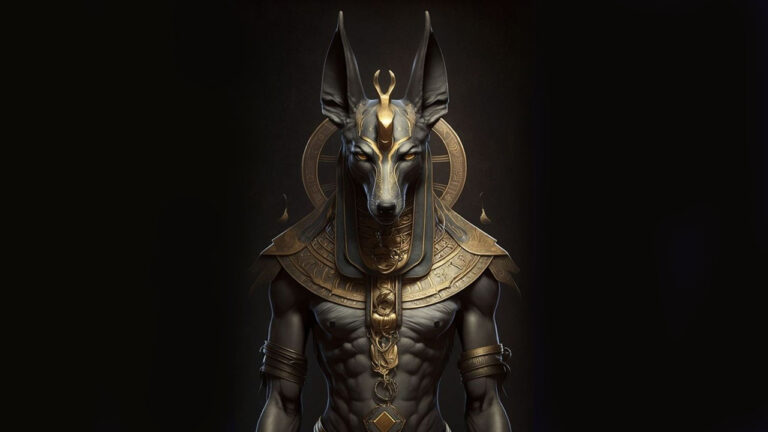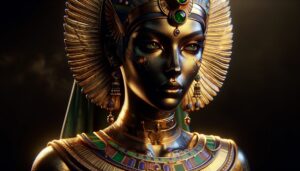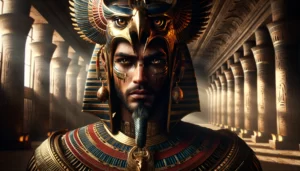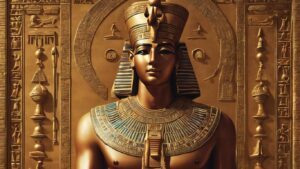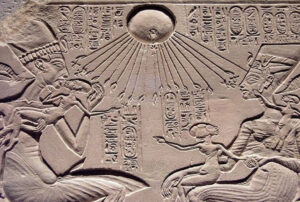Table of Contents
Anubis, a deity associated with mummification and the afterlife in ancient Egyptian mythology, is often depicted as a jackal-headed figure or a jackal. His role in Egyptian mythology was to guide and protect the souls of the deceased on their journey to the afterlife. This God played a crucial role in the funerary rites and was believed to weigh the hearts of the deceased against the feather of Ma’at, the goddess of truth and justice, during the judgment of the dead.
Purpose
In ancient Egyptian mythology, key roles were fulfilled by Anubis, primarily linked to death, mummification, and the afterlife. Assuming the role of a guardian, He guided and safeguarded the souls of the deceased, intricately involved in the mummification process. Rituals and ceremonies tied to mummification saw He is playing a crucial part. Overseeing the judgment of the dead, the God ensured the weighing of the heart in the afterlife. Essential for a smooth transition from the earthly realm to the afterlife, his presence was deemed indispensable. Symbolizing the transition from life to death, Anubis embodied the journey of the soul to the afterlife, highlighting his multifaceted significance in ancient Egyptian beliefs.
Origins
The origins of Anubis can be traced back to ancient Egyptian religious beliefs, evolving over time. Ancient Egyptian religious beliefs featured a pantheon of gods and goddesses, and Anubis likely originated as a local deity associated with the city of Abydos in Upper Egypt. He became more widely recognized and associated with funerary practices, particularly the process of mummification. Anubis became integrated into the broader mythology of the Egyptian pantheon, playing a crucial role in guiding the dead and overseeing the judgment process in the afterlife.
The Birth
The birth or origin story of Anubis is not well-documented in ancient Egyptian texts, and the mythology surrounding the birth of many Egyptian deities often varies. Anubis doesn’t have a standard birth narrative like some other gods in the Egyptian pantheon. Some accounts describe Him as the son of Osiris and Nephthys, where Nephthys disguised herself as Isis and seduced Osiris, leading to the birth of Anubis. Another tradition suggests that Anubis was discovered by the goddess Isis, who found the infant abandoned in the marshes. She took him in and raised him in gratitude. These stories, while providing some context, do not offer a detailed or consistent account of Anubis’s birth.
The Roles
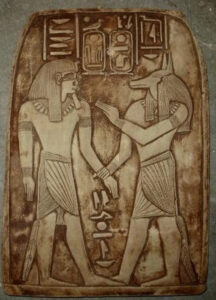
Anubis played several significant roles in ancient Egyptian mythology, religion, and funerary practices. His roles were closely tied to death, mummification, and the journey of the soul to the afterlife. Anubis was considered the guardian and protector of the deceased, guiding them through the perilous journey to the afterlife. He was closely associated with the mummification process, and in the afterlife, he oversaw the judgment of the dead, determining the fate of the soul. Anubis was invoked in various funerary rites and ceremonies, ensuring a smooth transition for the deceased. He symbolized the transition from life to death and the journey of the soul to the afterlife. Anubis had strong associations with Osiris, and his worship was an integral part of the broader religious practices of ancient Egypt.
Family
In ancient Egyptian mythology, the family relationships of deities often varied across different texts and traditions. Anubis is associated with different parentages in various myths. One common myth suggests that Anubis is the son of Osiris and Nephthys. According to this story, Nephthys, who is the sister of Osiris’ wife Isis, disguised herself as Isis and seduced Osiris, leading to the birth of Anubis. In this version of the myth, Anubis is considered a half-brother to Horus, the son of Osiris and Isis. Horus and Anubis are sometimes depicted together in certain funerary contexts. It’s important to note that Egyptian mythology is rich and diverse, and different regions and periods may have had variations in the stories and relationships among deities. The narratives were not always consistent across different texts or time periods.
Appearance
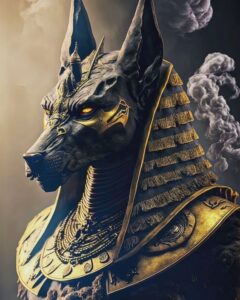
Anubis is typically depicted as a figure with the head of a jackal or as a full jackal, and ancient Egyptian art associates his appearance with his role as a funerary and afterlife deity. Some common features of the depiction of Anubis in ancient Egyptian art include a jackal head, a human body typically shown standing upright or in a mummiform pose, ceremonial dress or symbols of authority, and occasionally holding a scepter or an ankh. Anubis may also be depicted on the lids of canopic jars, emphasizing his role in the mummification process and the protection of the deceased. In scenes related to the weighing of the heart ceremony, He may be shown overseeing the judgment process.
Symbology
Anubis, as a prominent deity in ancient Egyptian mythology, holds various symbols conveying his significance and roles in the religious and funerary practices of the ancient Egyptians. Key symbols associated with Him include the jackal, a symbol of death and the afterlife; the scepter, symbolizing authority; the ankh, symbolizing life and immortality; scenes of the weighing of the heart, symbolizing the judgment of the soul; and depictions on canopic jars, symbolizing his role in the preservation of the body. These symbols collectively communicate Anubis’s associations with death, mummification, judgment, and the journey to the afterlife, integral to the religious beliefs of ancient Egyptians.
Anubis FAQ
Who was Anubis in ancient Egypt?
Anubis was a significant deity in ancient Egyptian religion, associated with death, mummification, and the afterlife. He played a central role in funerary practices and mythology.
